Epidemiology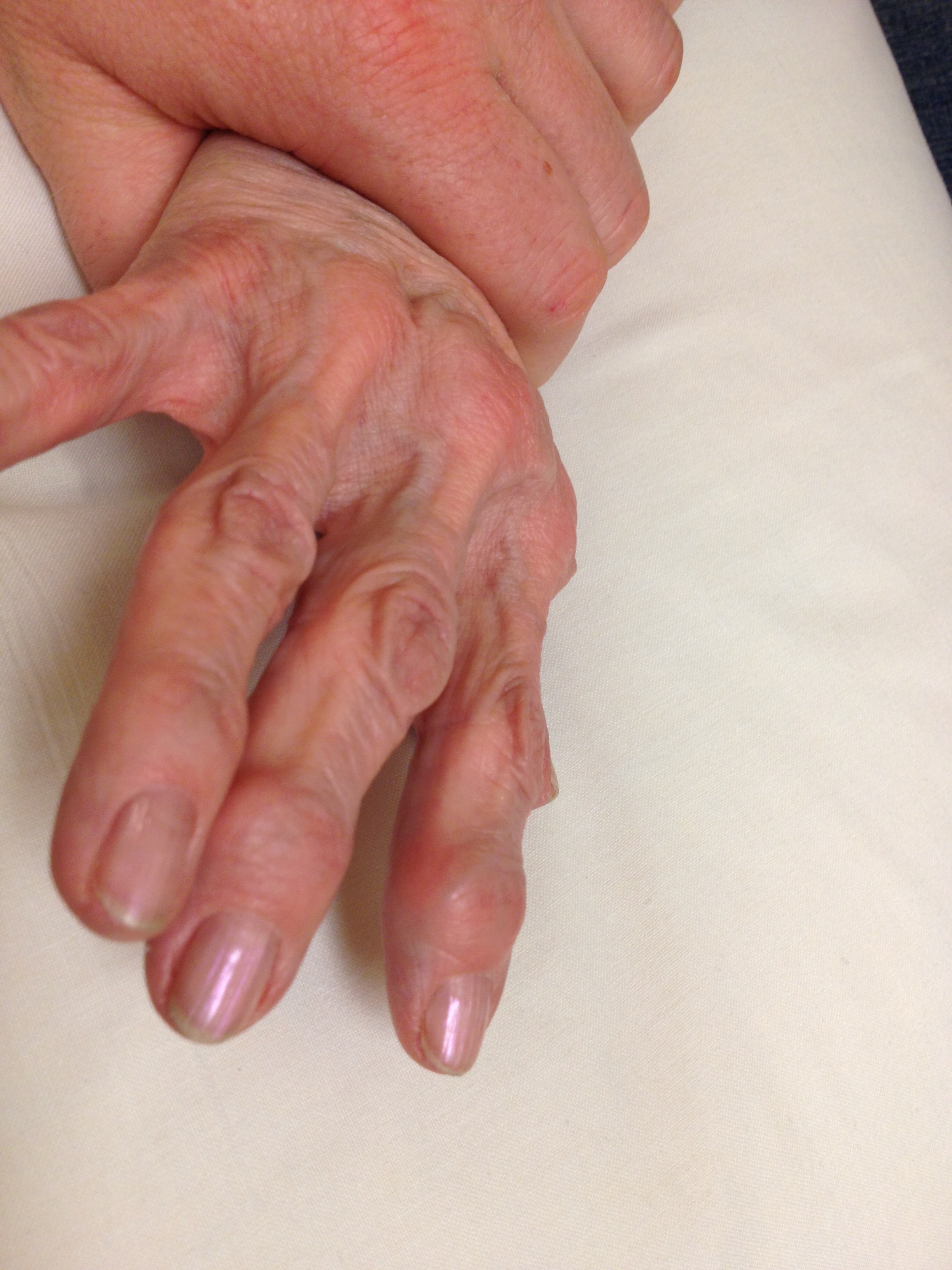
Male & Females > 60 years
- X-ray evidence of OA
Symptomatic
- 25% females
- 15% males
Affected joints
Base thumb
PIPJ / Bouchard's nodes
DIPJ / Heberden's nodes

3 Groups
1. Heberden's nodes
2. Basilar thumb & Heberden's
3. Heberden's and Bouchard's
Xray
Joint space narrowing
Subchondral sclerosis
Osteophyte formation
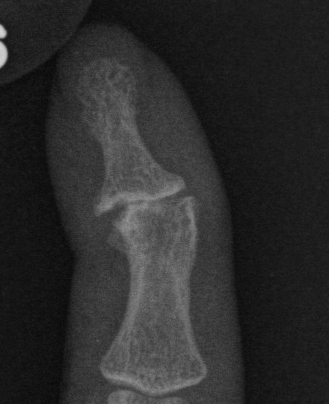
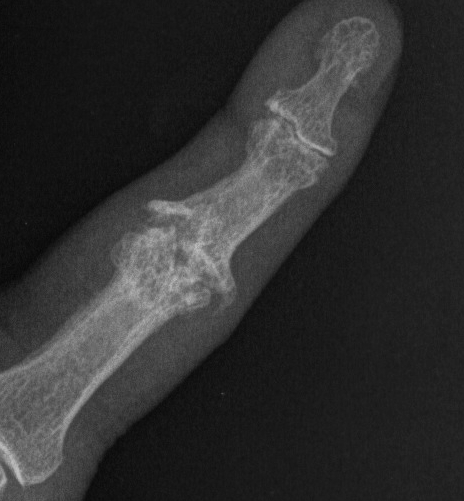
Management
Options
Arthrodesis
Arthroplasty
DIPJ Arthrodesis

Position
- 15 - 20o flexion
Incision
- transverse incision over DIPJ / H
- split / divide extensor tendon
- resect with small bone cutters and nibbles
Options
A. Headless compression screw
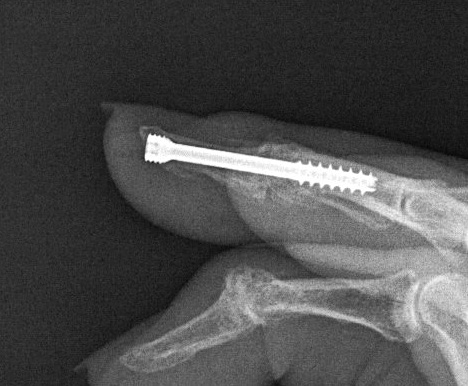
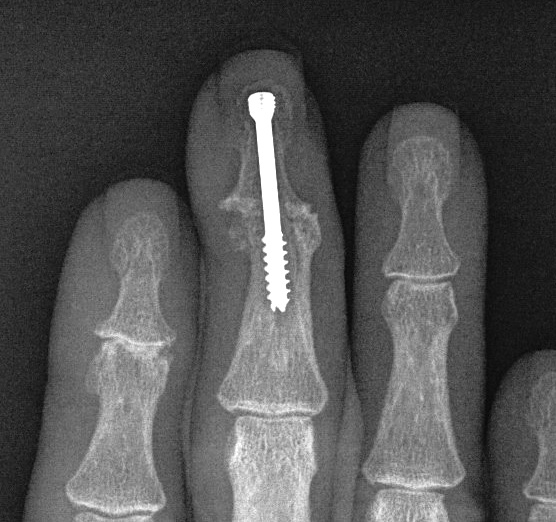
B. K wire and TBW
- single intra-axial K wire
- pass retrograde first, reduce, anterograde
- Circular wire
- small drill holes and pass 25 or 26 gauge wire
- tension
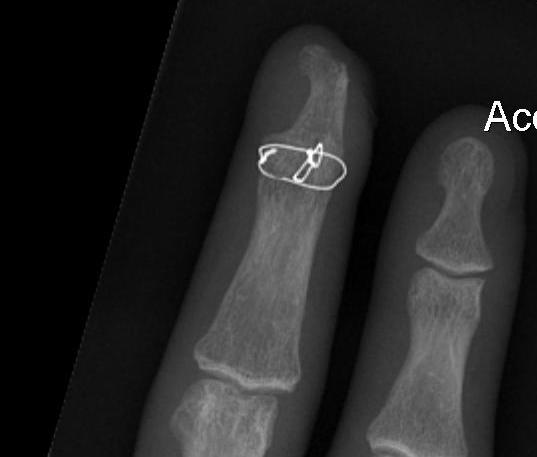
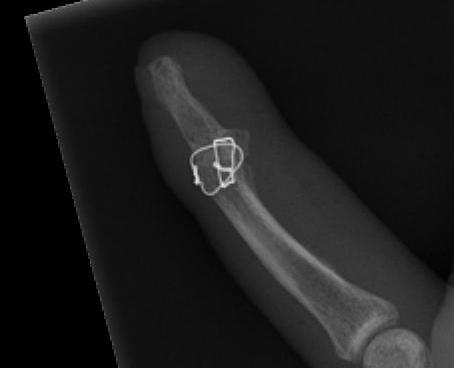
PIPJ Arthrodesis
Best in RF / LF
Position
IF / MF
- 25 - 35o
RF / LF
- 45 - 50o
Technique
Longitudinal incision
Options
A. Reflect central slip
- leave attached distally
- lateral bands remain
- suture repair at end
B. Interval between central slip and lateral band
- reflect central slip laterally
Release collateral ligaments
- leave volar plate intact
- create two opposable surfaces
- saw or bone nibbler
Fixation
A. Headless compression screw
B. Crossed K wires
C. Longitudinal K wire and TBW figure 8
- pass wire retrograde
- reduce, pass distally into P2
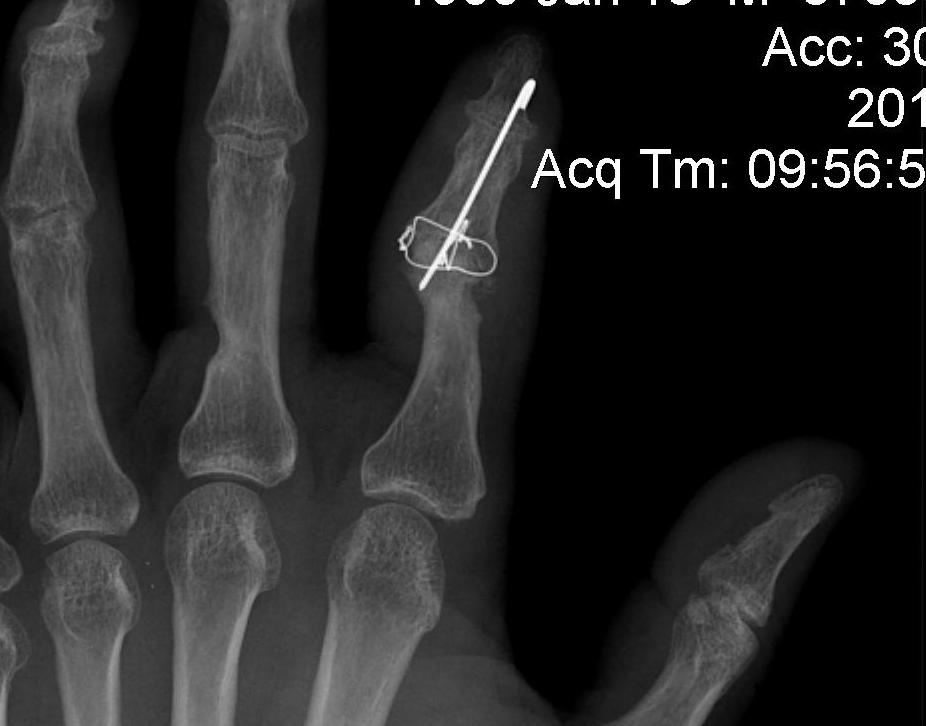
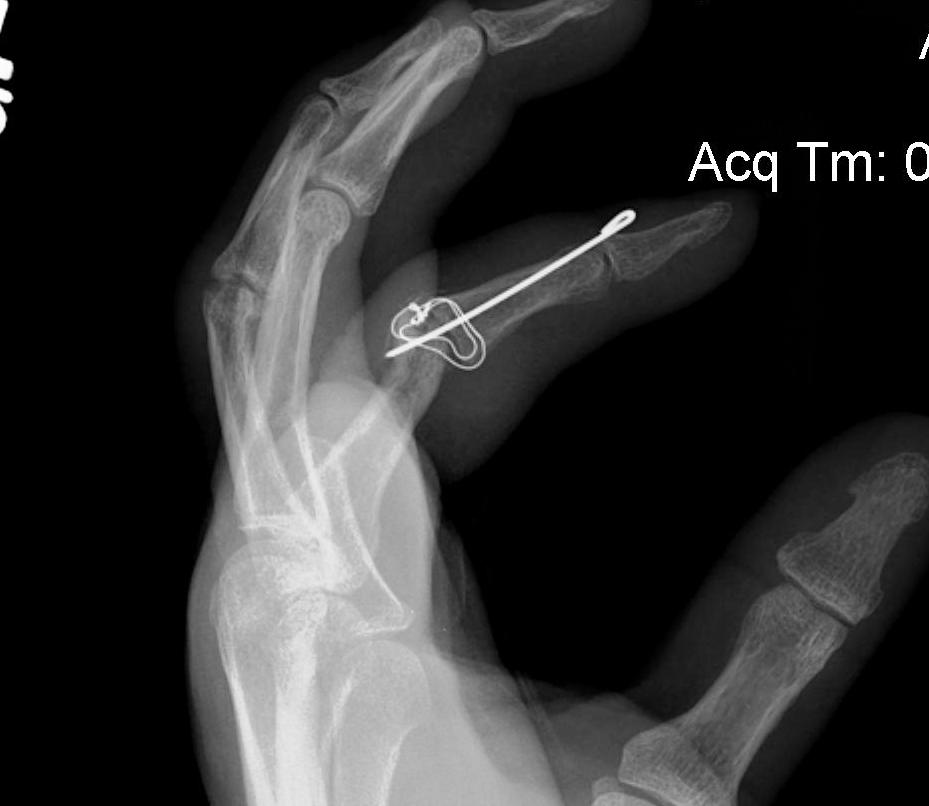
Results
Fusion rates about 90%
Arthroplasty
See rheumatoid hand discussion
